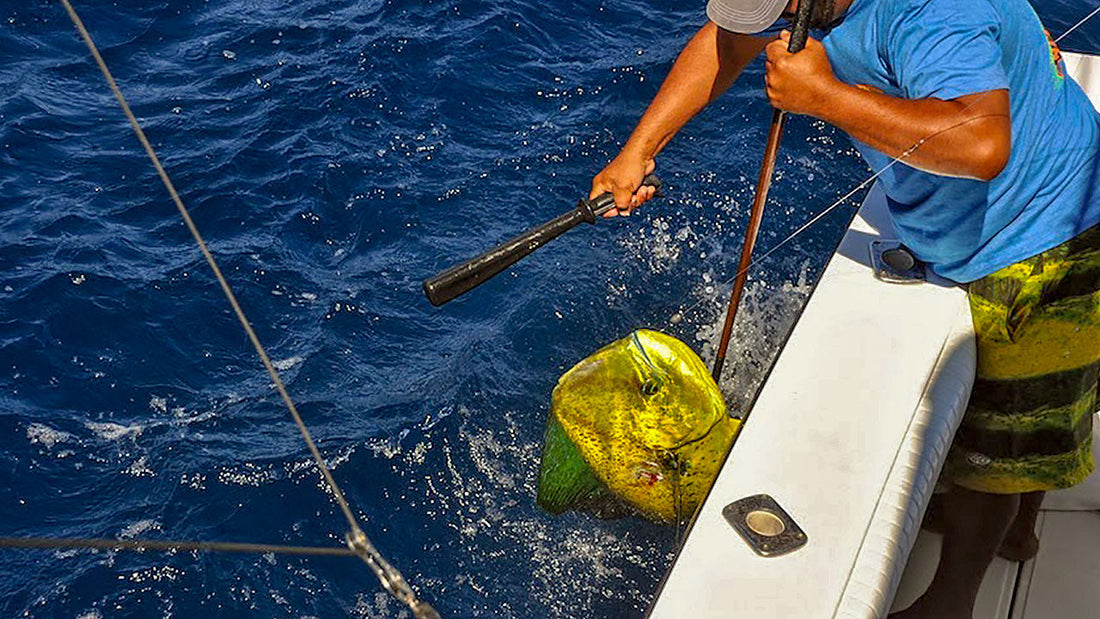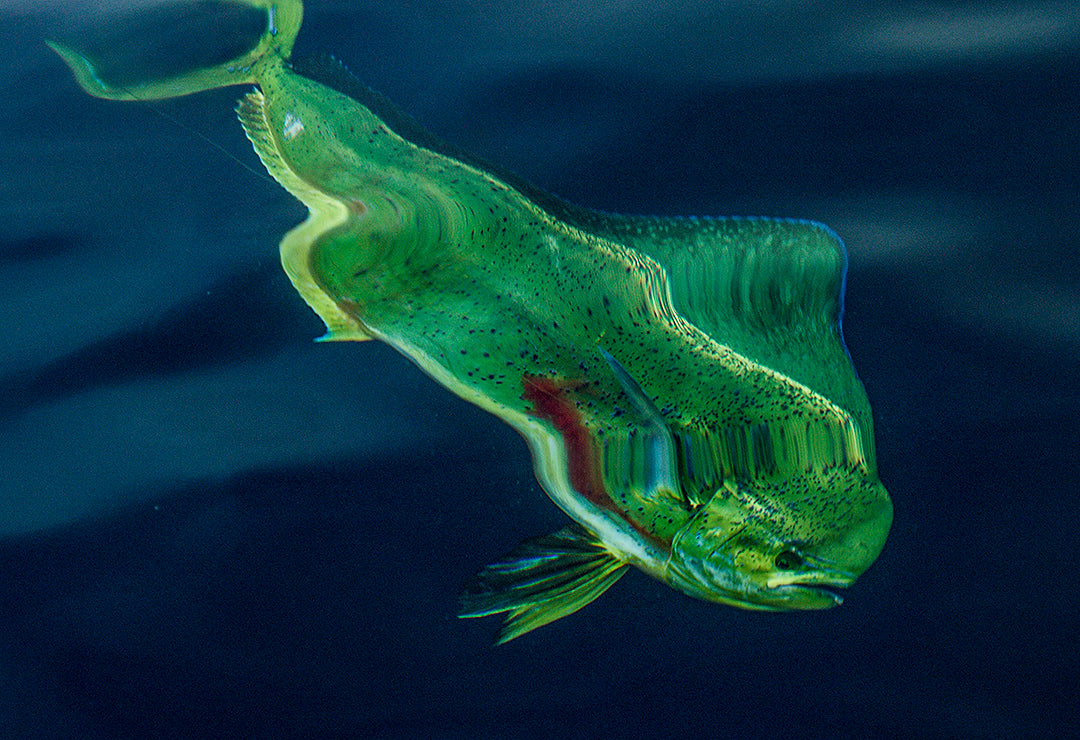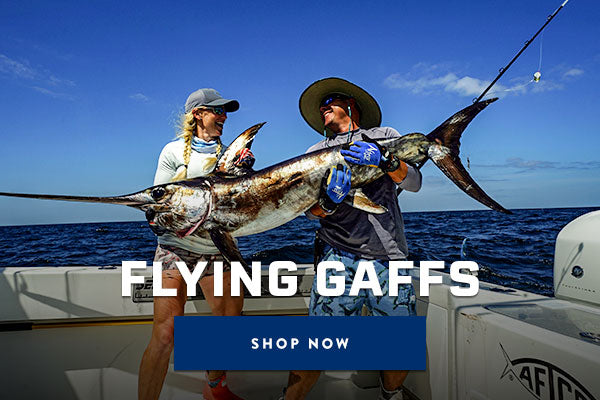
Fish Gaffing 101: How To Gaff A Fish
There are a few basic tips to keep in mind when it comes to closing the deal on a trophy fish. AFTCO's Greg Stotesbury shares the critical details you'll need to effectively get the job done. Read on for answers to questions like how far back to place the gaff, determining the right time to gaff the fish, what to do after you make contact and more.

You're in the cockpit watching you best friend's trophy bluefin tuna doing big slow circles under the transom corner as you stand by with gaff in hand. You know the moment of truth is about to go down, and it's all up to you to get the gaff in the fish and close the deal. As the big blue and silver color spot gets closer and closer, you are reminding yourself that this is the fish of a lifetime for your buddy and you must place the gaff properly when the time comes!
"Do I reach in front of the leader with the gaff and go for the coveted head-shot or wait for my opening just forward of the dorsal fin, but not too close to the stretched and tired leader, which could be cut in an instant by the sharp gaff hook. Maybe go under and gaff in the belly or tail far from the leader?"
"What’s going to happen after I gaff this trophy beast?"
"Is the gaff long enough and the hook big enough to subdue this monster?"
These are all questions that go through every deckhand or gaff man's head as he gets closer to the end game on a trophy fish. There's a right and wrong way to gaff a fish, and here are some answers on how to do it properly.
Always gaff fish behind the leader over the top of the fish as they make their turn toward the boat
Head shots are nice, and they do save some fillet, but when the big one is there and ready it's always best to gaff in the meaty forward-shoulder area behind the vulnerable leader. The skin is tough in the shoulder and the dorsal area is full of tendon and dorsal bones that keep gaff hooks from tearing free. A shoulder gaffed fish is also much easier to "steer" toward the boat after the gaff is placed. Gaffing from underneath, in the belly or down near the tail is almost never a good strategy.
Ideally, a second crewman is standing by to place another gaff once the beast is close to the hull in easy gaff range. I like to have at least one gaff for every 75lb fish, one gaff for 100lb fish, two gaffs for 150lber's and three (or a flying gaff) for anything over 200lbs.
Waiting for the fish to be ready to gaff is critical
A big, squirrely, still-green gamefish at deep color is super difficult to gaff properly and will almost certainly dig in harder and try to separate the gaff from the gaff man! Let the fish get tired enough and make its final circle before you reach out and close the deal. Having the boat idling slowly forward can also be a big help when landing billfish, tuna and other large gamefish. Once the fish is being lead by the boat's forward motion, they are almost always easier to gaff in the head or forward shoulder. Stay in control and don't let go of the gaff. An AFTCO Sun Protection Hoodie is ideal for keeping you cool, calm, and collected during the heat of the moment.
I like longer gaffs on everything but small skiffs and kayaks
You can always choke-up on longer fishing gaffs to get that extra reach, but if the fishing gaff is too short your options are limited. My general rule of thumb is to have at least 3 gaffs of 6' or 8' length on any boat that fishes bigger gamefish like tuna, swords or big sharks. Some of my favorite gaffs are the AFTCO tapered-aluminum GFA366, GFA466, GFA368 and tapered-fiberglass GFF38 and GFF48. Any boat that regularly fishes offshore with an expectation of landing anything over 200lbs should also have at least one AFTCO 006FG flying gaff aboard equipped with a FGH6" or FGH8" hook rigged with at least 20' of 5/8" soft nylon line. Fixed head gaffs (stick gaffs) should have 3" or 4" hooks, unless they spend a lot of time gaffing dorado, king mackerel and other smaller game that is easily subdued with a 2" hook.
All the above recommendations are general guidelines and may not apply in every circumstance or situation encountered on the water. All anglers and crew should exercise extreme care and caution whenever gaffing, landing or handling large game fish at boat side.










